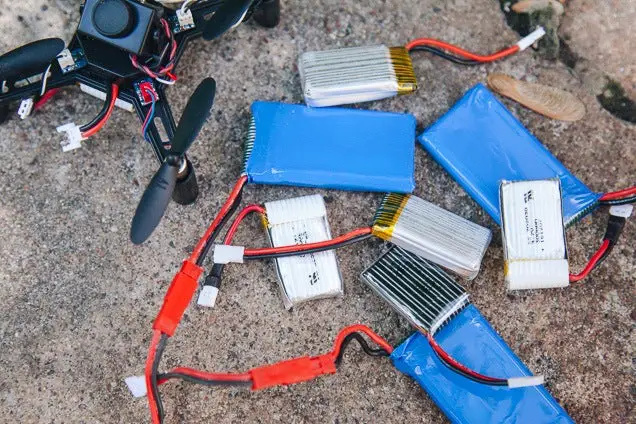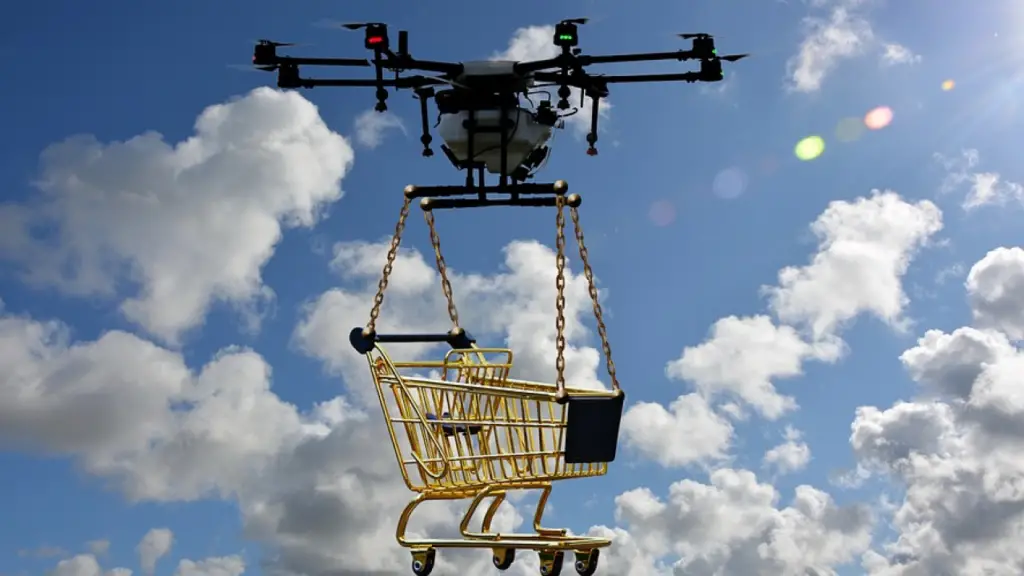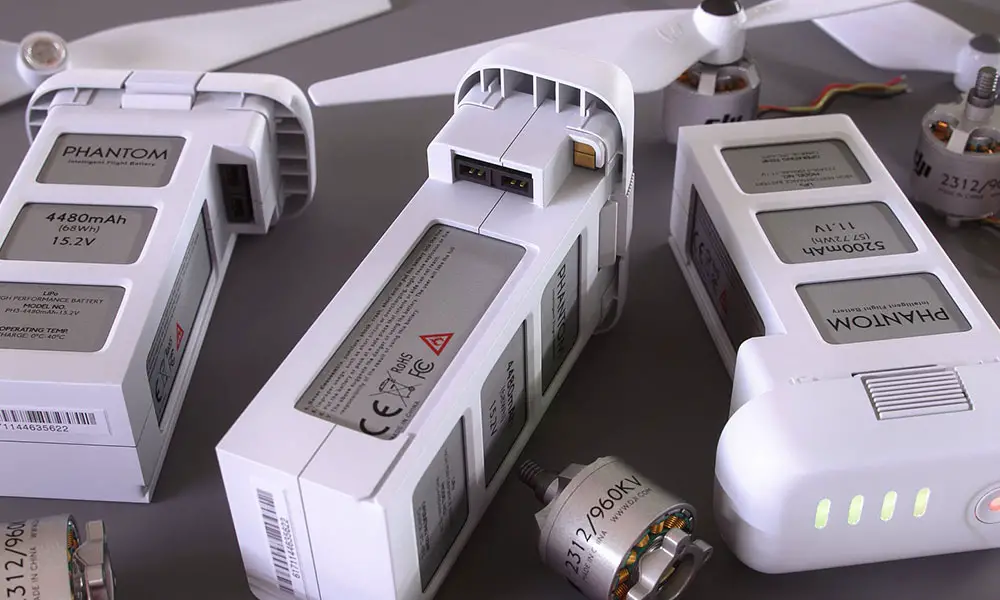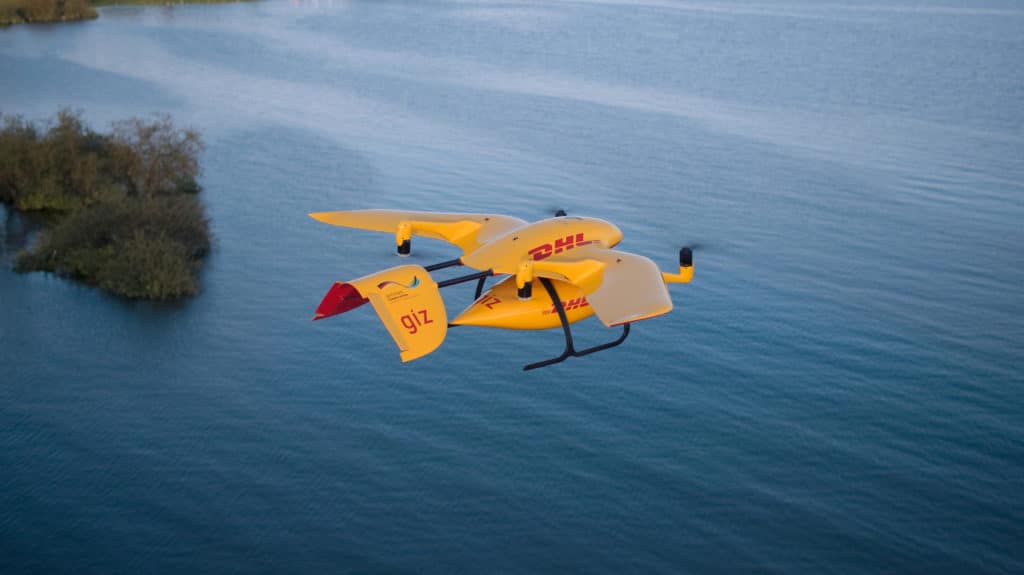One of the things that often shock people new to drones, is just how short their battery life can be. Drone batteries have come a long way in recent years but they are still quite short relative to our initial expectations.
We are starting to see slight increases in flight time as the technology progresses, but it can be quite interesting to understand why they currently are, and have been so limited.
In my career, I’ve worked with delivery drones where battery life is a critical aspect of the operations. I’ve learned a few interesting things about the factors that affect flight time, and I’ll share my tips on how to improve yours.
Let’s get the main question out of the way.
Why Do Drones Have Such Short Battery Life?
Drone batteries need to power motors that spin thousands of times per minute along with the electronics on board, like the GPS, cameras and sensors. The fine balance required between power and weight makes it hard to add battery capacity. This is why drones often have a short battery life.
As with all things, there are a number of factors as to why the battery life of a drone can be so short. I’ll break down some of the aspects in further depth but also provide some solutions that can help improve your flight time.
Drone Batteries Basics
The first thing to understand, is the batteries themselves. We’ll give you a quick rundown on the basics.
- Drones generally use lithium polymer batteries. These are more commonly referred to as LiPo batteries.
- LiPo batteries are used because of their energy density. They can store a lot of power within a lightweight package compared to other energy sources.
- LiPo batteries also have a high discharge rate. You can use a lot of the stored energy very quickly. This is what keeps drones flying in the air as their propellers need to rotate thousands of times a minute and also what allows racing drones to move as fast as they do.
Now we can cover some reasons why a drone’s battery life might be reduced.
How You Fly
First and foremost, the way you fly has one of the biggest impacts on your flight time. It’s all about how much power you are asking the drone to output.
This is one of the reasons why racing drones only last 2-5 minutes flying at top speed, and a cinematic camera drone like a DJI Mavic can cruise around for 30 minutes or so.
Higher speeds require higher rotations-per-minutes (RPM) from the motors. This in turn requires more power leading to reduced flight time.
Additionally, when you aggressively change directions, you are requesting that the drone counteract its momentum continuously which needs large spikes of energy..
How to Increase Your Flight Time
- All remote controllers can be programmed to reduce the input maximum points. This will limit the throttle output to the drone, so that your maximum flight speed is reduced.
- Flying at a constant pace is more efficient than hovering in place. Do not move too fast or you will lose this advantage.
- Where applicable, avoid using the sports mode flight mode. This also limits the speed and throttle maximums.
- Where applicable, avoid using GPS flight mode. This is difficult to do for beginners, but for those who can fly in Attitude modes, you will see an improvement in flight time. The continuous position corrections in GPS mode use more power.
- Fly at a steady pace and while gently changing directions when needed. Aggressive maneuvering requires more power to overcome inertial forces.
Propellers
Propellers are one key aspects that can have the most significant impact on flight efficiency.
Their size and shape determine how much power is required to remain in flight for any specific period of time.
How to Increase Your Flight Time
There are a few rules that you can follow to choose an efficient propeller.
- The less blades the better (2 minimum) – The higher you go in blade count, the more maneuverable the aircraft becomes in the air but the less efficient the flight. We state 2 minimum as you wouldn’t be able to fly with only 1 (lol).
- The lower the pitch angle the more efficient – Each propeller is made of blades, and those blades are tilted to a certain angle. In general, the lower the pitch angle, the more efficient your flight will be and thus increasing flight time. Once again, this will reduce maneuverability.
- The larger they are, the more efficient – The only thing that limits your propeller size choice, is the distance between motors. Caution: If they get too large, they’ll run into the body of the aircraft or into the adjacent propellers.
Battery Health
Proper battery maintenance is key to ensure that you continuously maximise your flight time.
Due to the extreme pressure placed on LiPo batteries with constant charging and discharging at high rates, it is inevitable that they will degrade in performance over time.
They have very specific care procedures that I’ll outline below.

How to Increase Your Flight Time
- Do not fly below 3.6V per cell loaded (in flight) – Avoid flying with less than 3.6 volts per battery cell. This may mean that you will have less flight time per session, but your battery will remain healthy for longer. This means more flight time throughout the lifetime of the individual battery. 100 flights lasting only 20 minutes is better than 50 or less flights of 30 minutes. That extra 10 minutes is not worth it in the long run.
- Store your batteries at approximately 50% when not in use – If you are not going to use your batteries for more than a week, store them at around 50-60% or 3.8-3.9 volts per cell. Never store your batteries at close to full or empty capacity. Once they discharge below a certain point, they will be unrecoverable and useless.
- Keep your batteries in temperature controlled regions – Do not let your batteries get too cold or hot. Check the manufacturers guidelines for the optimal temperature.
Weather Conditions
The only factor out of our control, yet one that we are so dependent on. Weather can cause a variety of problems when it comes to drones, and it’s best to remember, it’s okay to come back another day to fly.
Never get so focused on flying that you do so in spite of potentially dangerous weather conditions.
There are a few things to keep in mind when it comes to weather.
How to Increase Your Flight Time
- Check your manufacturer’s wind limits – Remember: As your battery voltage decreases, the less power you will generate. If you do not follow the recommended guidelines for your specific drone, you might be able to handle the wind for the first half of the flight, and then find you don’t have enough power to return to your landing point.
- You will have a significantly reduced flight time in the cold – The ambient temperature is not much of a concern. You need to worry about the temperature of the batteries themselves. Warm them up using body heat or a heater (cautiously).
- Do not let your batteries overheat – Hot weather can cause your batteries to overheat. If you can keep an eye on the temperature of the battery, ensure that you do not operate them over 60°C (140 F).
Power to Weight Ratio
As we mentioned before, there is a fine balance that needs to be met in order to keep a drone in the air for any period of time.
The drone produces thrust to lift it into the air but that thrust is counteracted by its weight.
Increasing the size of a battery often means increasing the weight of the battery. This can mean that you make no meaningful gains to your flight duration.

How to Increase Your Flight Time
The easiest way for most consumer drones to increase their flight time, is to reduce the weight.
- Now for some drones such as the DJI range of products, the options can be limited as they come pre-built and generally have no detachable parts. However,you can look into propellers made from carbon fiber as one way to reduce weight.
- For other drones, attachments such as propeller guards, stands/legs or cameras can be removed in order to reduce weight. I especially use this method for the toy drones that I use for practice as I don’t need most of the peripherals in order to fly.
- Drones most capable of reducing weight are FPV or racing drones. If you have one of these drones, you can consider changing your parts to lighter or more compact versions. Some FPV tips for weight reduction:
- Use a lighter frame
- DJI HD VTX is heavier than most analogue versions
- Do not use an additional camera such as GoPro
- Use a micro FPV camera
- Consider lighter motors
- Use propellers with less blades
- Try a lower mAH capacity battery
Additional Electronics
All the electronics on your drone share power with the flight system. This can draw energy away and shorten battery life.
Be aware that adding additional electronics to your drone will have some impact on its battery life and subsequently the flight duration.
However, considering the amount of power required for flight in comparison to the small amount required for electronics use, the gains made by disabling features or hardware is often very negligible and can be quite dangerous if you do not know what you’re doing.
How to Increase Your Flight Time
- There are some trends to avoid such as additional LEDs and extra gadgets or attachments. These often do not add anything to your flight behaviour but can reduce flight time through weight and power draw.
- Certain video transmitters can be set to a higher power output in order to increase range. If your drone has the ability to toggle this setting, keep your milliwatt output to a minimum and keep your drone in close range.
- When flying line-of-sight, consider removing your camera if you do not need it. If it’s possible to easily unplug your camera, you can save weight as well as power.
Most of my suggestions here may only add seconds or minutes to your flight time when taken in isolation, however in unison it can all stack up.
Hope this helped to explain why drones have such short battery lives. Let me know if you’ve found these tips useful or interesting.
If you’re new to drones and interested in what it can cost to buy a professional drone, check out my other article here: How Much Does A Professional Drone Cost?




